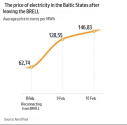You are using an out of date browser. It may not display this or other websites correctly.
You should upgrade or use an alternative browser.
You should upgrade or use an alternative browser.
Miscellaneous News
- Thread starter bd popeye
- Start date
Reddit belt has lost sapience. Hopefully the price keeps increasing.
AssassinsMace
Lieutenant General
“I am what happens when you try to carve God out of the wood of your own hunger…”
“I am what happens when you try to carve God out of the wood of your own hunger…”
I love how some random dude with same name is now the deepseek face
I enjoyed Trump more when he didn't have autistic tech nerd constantly attached to his hip. Now, he just looks pathetic. Surely, there will be a falling out eventually, right ? There is no way that a man of Trump's ego will allow Musk to overshadow him for the next four years ...Welcome to the era of the Elon Musk...Ahem...Trump 2.0 America.
As for Musk, he doesn't seem to be pragmatic enough to realize Trump can only protect him for a max of 4 years, assuming Trump doesn't kick him to the curb by then. He is pissing off many powerful people on a personal level. They'll be gunning for him.
Also why is Musk dragging his kid everywhere ? Is he using his kid as a shield to deter assassination attempts ?
Last edited:
There is no real debate between what to use?The debate over whether to use nominal GDP or purchasing power parity (PPP) to compare China and US is dependent on the context of the comparison. Both metrics offer valuable insights but serve distinct purposes.
Nominal GDP is valued at current exchange rates. USD remains the dominant currency for international trade and foreign reserves. In this context, nominal GDP reflects a country's ability to engage in USD denominated transactions, like global trade and its influence within that system. This affects China's ability to purchase oil, leading edge semiconductors, machine tools and making foreign investments. A lower exchange rate benefits China's ability to export to support industrial upgrading at the expense of lower ability to import, so it's a matter of balancing these 2 needs. It's also a more volatile metric due to exchange rates which might mislead about a country's actual productive capabilities. In the context of the global USD denominated trade system, US remains dominant.
PPP attempts to account for differences in price levels between countries. A poor nation is often not as poor in lifestyle as its nominal GDP may suggest as it's domestic services and products are priced much cheaper than in international markets. That being said not all PPP are the same as each nation's domestic industrial ability varies. For example if we use PPP GDP as a proxy for national power it would appear the ratio between China and India is 2.3 instead of 4.6 in nominal terms. Yes, average Indian lifestyle isn't as bad as it's nominal may suggest as they have access to cheaper food, shelter, education, other domestic products and services but this only reflects what they can produce domestically. If we want to compare ability to produce modern weapons in a war economy, the difference between the two countries might actually be even larger than what nominal GDP suggests, in favor of China. The reason is the composition of that GDP. Chinese economy's composition is heavy in manufacturing with a comprehensive and vertically integrated supply chain in mid-end technologies striving to do the same at the leading edge. In many areas it has about half of the world's productive capabilities, with weakness in a few high end industries. PPP is a good proxy of power based on what a country can produce domestically.
The Western mainstream media's coverage of the Ukraine war is an example misapplication of using nominal GDP to gage Russia's ability to wage war. While it's somewhat true Russian influence in the global marketplace is weakened and at the level of , it doesn't reflect their ability to wage war. Russia has a vertically integrated and mature arms industry, producing at prices much cheaper than at international prices. They also have control over the raw material inputs. than US and Europe combined (NATO). This is counter to what one might conclude if we just look at nominal GDP or even PPP, as it doesn't consider composition.
In a war economy, it matters what you can produce and how much of it you can produce. Money (nominal GDP) is only meaningful if you have access to the production, else it's meaningless. After the Cold War, the US gained access to the defense productive capabilities of most of the world's major advanced industrial nations so it's strength in nominal GDP directly translates into access to war time capabilities, even if it lacks the industries itself. In the example of India, it's sizable PPP isn't reflective of its war economy capabilities due to it's weakness in domestic industries, having to rely on imports which is affected by exchange rates. Due to economic composition, most nations don't have the ability to even effectively transition to a war economy by itself.
US nominal GDP is in dollars, China nominal GDP is in RMB.
There is no mechanism to convert trillions of RMB to dollars or vice versa. So with no statistical normalisation, the nominal GDPs of two nations using different currencies can't be compared.
broadsword
Brigadier
I enjoyed Trump more when he didn't have autistic tech nerd constantly attached to his hip. Now, he just looks pathetic. Surely, there will be a falling out eventually, right ? There is no way that a man of Trump's ego will allow Musk to overshadow him for the next four years ...
As for Musk, he doesn't seem to be pragmatic enough to realize Trump can only protect him for a max of 4 years, assuming Trump doesn't kick him to the curb by then. He is pissing off many powerful people on a personal level. They'll be gunning for him.
Also why is Musk dragging his kid everywhere ? Is he using his kid as a shield to deter assassination attempts ?
Trump can tolerate him considering he was his benefactor. Musk has a higher stature than those Trump fired. They are on the same wavelength and it is not like Musk is bragging to the media.
Also why is Musk dragging his kid everywhere ? Is he using his kid as a shield to deter assassination attempts ?
To hide the fact his other kids hate his guts and has been a largely deadbeat, absent father to most of them.
Last edited:
Honestly guys, what do you think of this idea that this entire DOGE thing is just the US’s attempt to trim the fat so that they can use what they have left to focus on taking down China. He really seems to believe that these deep state pundits have extreme level of genius scheming planning capabilities that will ultimately help them to maintain its grip On the world forever. Somehow given all the damage the USA has taken across the board over all these decades of wars that have left the US depleted of weapons, men and capital, I have a very hard time believing anything other then the USA is literally making things up as they go along to see what sticks along with Trump being too used to using tariffs as a tool no matter how poor of an idea it is. He literally only knows how to bully others, nothing more and his actions directly threaten those allies when he didn’t have to do so is only going to make things worse for the USA, not better and the deep state should know that the USA being in the weakened state across the board, means that there ability to wage war without consequence is being taken away, not to mention they fact they a in this mess to begin with means that they really didn’t plan very well at all.
Last edited:


